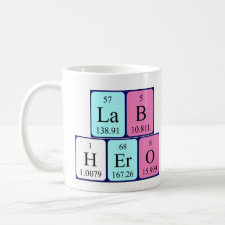
Authors: Guo BL, Bi S, Zhang BY, Tong YK, Chen X, Tian MM
Article Title: Synthesis of nanoparticles with a combination of metal chelation and molecular imprinting for efficient and selective extraction of glycoprotein.
Publication date: 2021
Journal: Microchemical Journal
Volume: 167
Article Number: 106262.
DOI: 10.1016/j.microc.2021.106262
Alternative URL: https://www.sciencedirect.com/science/article/pii/S0026265X21003465
Abstract: In this study, metal-chelated molecularly imprinted polymers (MG@Cu2+@MIPs) were prepared for sensitive and selective detection and removal of ovalbumin (OVA) in egg white samples. The effects of sample pH, OVA concentration, eluent type, and ionic strength on the adsorption were determined and systematically discussed. OVA was detected and separated at pH 8.5, and eluted with 0.5% cetyl trimethyl ammonium bromide (CTAB). The results of multiple adsorption-elution cycles indicate that the adsorbent can be effectively regenerated and reused, and the actual performance do not significantly decrease, indicating that the adsorbent has good stability. As a novel SPE adsorbent, MG@Cu2+@MIPs reacted quickly to the addition of OVA. The adsorption equilibrium has been achieved in a short contact time, and OVA can be completely adsorbed within 30 min. Under the optimum conditions, the maximum adsorption capacity can reach 395.30 mg g-1, which indicates that the adsorbent has good adsorption performance. The specific imprinting sites can selective distinguish target OVA from other proteins such as horseradish peroxidase (HRP), bovine hemoglobin (BHb), lysozyme (Lyz), and bovine serum albumin (BSA). The presence of interfering protein has little effect on the detection of OVA, which indicating that MG@Cu2+@MIPs have a high selectivity to OVA. The adsorption performance is consistent with the pseudo-second-order kinetics and Langmuir adsorption model. The ionic strength is negatively correlated with the adsorption capacity, and the OVA solution without adding ions is easier to be removed. In a nutshell, MG@Cu2+@MIPs have a potential to specifically recognize, separate, and enrich OVA in actual samples, which provides a great possibility for its application in clinical diagnosis
Template and target information: protein, glycoprotein, ovalbumin, OVA
Author keywords: Metal chelation, Molecularly imprinted polymers, adsorbent, enrichment, Ovalbumin



Join the Society for Molecular Imprinting

New items RSS feed
Sign-up for e-mail updates:
Choose between receiving an occasional newsletter or more frequent e-mail alerts.
Click here to go to the sign-up page.
Is your name elemental or peptidic? Enter your name and find out by clicking either of the buttons below!
Other products you may like:
 MIPdatabase
MIPdatabase









